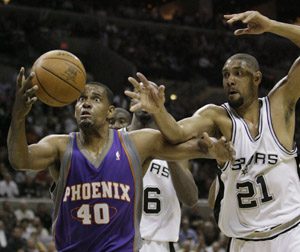Everything Athletes Need to Know about Elbow Hyperextension
 When most people think of elbow injuries, they think of overuse injuries like tennis elbow or golfer’s elbow. Overuse injuries like these are common, but so are acute elbow injuries like an elbow hyperextension.
When most people think of elbow injuries, they think of overuse injuries like tennis elbow or golfer’s elbow. Overuse injuries like these are common, but so are acute elbow injuries like an elbow hyperextension.
Many professional athletes have suffered from hyperextended elbows during their careers, including former Phoenix Suns center Kurt Thomas, former Florida Gators running back Jeff Demps, and current free agent wide receiver Malcolm Mitchell.
Whether you’re a budding professional athlete or someone who enjoys the occasional recreational game, it’s important to understand elbow hyperextension. It’s especially important if your sport of choice is basketball, football, or boxing.
Read on to learn about the most common causes of this injury, along with tips on how to prevent and treat it.
What is Elbow Hyperextension?
Elbow hyperextension is an injury that occurs when the elbow is bent backward and moves beyond its normal range of motion. When the elbow is beyond its normal range, people typically experience the following symptoms:
-
A popping sound
-
Immediate pain
-
Pain when touching or moving the elbow
-
Swelling at or around the elbow
-
Redness at the elbow
-
Joint stiffness
-
Muscle spasms
-
Loss of strength in the affected arm
-
Loss of joint mobility
Sometimes, people with elbow hyperextensions also experience elbow dislocations. In severe cases, people with a hyperextended elbow may also experience elbow deformities or a reduction in circulation in the affected arm.
Some research also shows that repetitive hyperextension injuries can cause some pathological changes to the bones and soft tissues of the elbow joint.
What Causes Elbow Hyperextension?
Elbow hyperextension can happen to anyone. But, it typically happens to athletes in the following situations (or situations like them):
-
Sudden blows in contact sports like football or boxing
-
Placing a heavy load on the joint in sports like gymnastics or weightlifting
-
Falling in any sport and throwing out the arm to brace oneself against the impact
Certain individuals are more prone than others to potential elbow hyperextension, including:
-
Those who are involved in vigorous, contact activities
-
Older adults with weaker bones and ligaments
-
Individuals who have a history of previous elbow injuries
How to Prevent Elbow Hyperextension
In many cases, elbow hyperextension is not entirely preventable. No matter how talented of an athlete you are, you can’t always avoid a potential fall or contact with another player.
At the same time, though, there are still some steps you can take to lessen your chances of injuring your elbow while playing sports or participating in other activities.
Some specific things you can do to prevent elbow hyperextension include:
-
Use proper form and technique whenever you’re engaging in your sport of choice
-
If you have experienced an elbow injury in the past, wear a brace or supportive sleeve to keep the joint stable and provide extra protection
-
Stretch the muscles around the elbow joint — muscles in the forearm, biceps, and triceps — to improve mobility
-
Strengthen the muscles around the elbow joint to provide it with extra support and stability
How to Treat Elbow Hyperextension
After you hyperextend your elbow, you’ll need to visit the doctor to make sure you didn’t experience any other injuries along with the hyperextension.
In most cases, elbow hyperextension can be treated with the RICE method and other pain management treatments.
The RICE method includes the following components:
-
Rest: Avoid extending and flexing the elbow in the days following your injury, and take time away from sports or other activities that require you to use your elbow. You may want to use a sling to keep the joint stable, too.
-
Ice: Apply ice immediately after injuring your elbow to minimize any pain and swelling.
-
Compression: To further reduce swelling and inflammation, you can wrap your elbow in a compression bandage. This improves blood flow to the area and can speed up the healing process.
-
Elevation: Raising your elbow above your heart can also reduce swelling. Try propping it up on some cushions while sitting or lying down.
In addition to utilizing the RICE method, you can also utilize over-the-counter painkillers like aspirin, naproxen, or ibuprofen.
After the swelling, redness, and other immediate symptoms subside, you may want to wear an elbow brace. This will provide extra stability and help protect your elbow while it continues to heal.
In severe cases, you may need surgery to repair your hyperextended elbow. This is typically only necessary when you’ve damaged the surrounding bones or ligaments.
Final Thoughts
Elbow hyperextension might not be totally preventable, but, if you keep these tips in mind, you can still decrease your chances of experiencing this frustrating injury.
In the event that you do hyperextend your elbow, you’re also armed with the information you need to treat it and get back to your sport of choice as soon as you can.